- S.D. Eibar ready for maiden La Liga outing
- SD Eibar stengthen ahead of debut La Liga season
- Can ‘Super Mario’ live up to expectations in Madrid?
- MAN IN THE GROUND – Brentford 0 – 4 Osasuna
- Historic Basque derby welcomes S.D. Eibar to La Liga
- Munich to Madrid, via Brazil – Tony Kroos
- Rakitic in Spanish Switch
- Can Spain find redemption in Rio?
- Viva Espana! A season of redemption for Spanish football
- From the old to the new: who can fill the void in years to come for La Roja?
A Celtic corner of Spain – Celta Vigo and the Balaidos
- Updated: 19 November, 2011
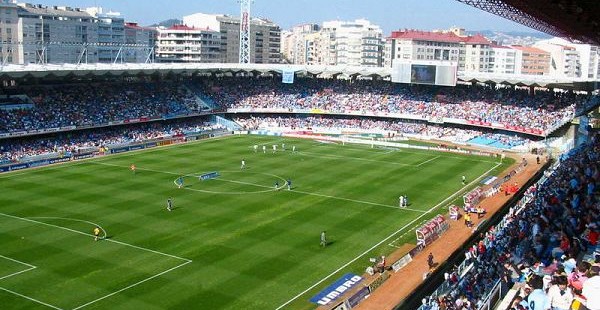
By Chris Clements (estadiosdefutbolenespana)
If you were ever searching for concrete proof of Spain’s diverse cultural mix, then travel to Vigo on its north-western Atlantic seaboard.
More working class than the showy La Coruña or saintly Santiago de Compostela, this tough industrial city is home to Europe’s largest fishing port and lies just 20 miles north of Portugal. It is also home to the country’s most westerly senior team whose name reflects Galicia’s ancient and beloved Celtic links. This is Celta Vigo territory.
Vigo does share a cultural link when it comes to football however, for like many northern ports the sport was introduced to the city by British ex-patriots in the 1890’s. Two clubs from the city dominated the early years of Galician football with either Real Vigo Sporting Club or Real Fortuna FC winning the first 16 regional championships.
Whilst Real Vigo Sporting Club reached the final of the Copa del Rey in 1908, the teams struggled to make a permanent impact outside of the region. So in August 1923, following an article by local journalist and sportsman Manuel de Castro, Sporting and Fortuna merged to form Real Club Celta.
Home matches were held at Sporting’s Campo de Coia, which was sufficiently developed to host the final of the 1922 Copa del Rey. The new club also adopted Sporting’s red shirts, but these were quickly replaced in 1924 with the now familiar sky blue. 1924 also saw the purchase of a plot of land a few hundred yards to the south of the Campo de Coia, close to the Rio Lagares, where a private company aimed to build a new stadium. The club carried on at the Campo de Coia until 9 December 1928 when Celta beat Athletic Bilbao 2-1 in the Copa del Rey.
The new Balaidos stadium took shape over a period of three years and was beset with financial and physical problems, including the diversion of the Rio Lagares. The original plans of architect Jenaro de la Fuente had to be scaled back and on opening featured a large ‘J’ shaped terrace and and simple hard standing on the two other sides. It was inaugurated on 30 December 1928 with a 7-0 victory over Real Union.
Unfortunately, Celta didn’t take this form into the inaugural season of La Segunda and was relegated to the regional leagues after finishing ninth out of ten. Somewhat ironic, given the fuss the club kicked up about not being included in La Primera.
Following the Civil War, Celta embarked on a run that would see them play in the top division for 19 of the next 20 seasons, by far the most consistent presence the club has had in La Primera. During this period, Balaidos was further developed to include a west terrace, a substantial pitched roof over the north terrace and a cantilevered stand on the south side, up close to the Rio Lagares.
Four tall floodlight pylons were added in the early sixties, with the two on the north side anchored to the terrace and the north cover extended around them. Celta dropped into La Segunda in in 1959 and remained there for the next decade, but when they did reappear in the top division at the start of the 1969-70 season, Balaidos was undergoing a significant redevelopment.
Celta has always been tenants at the Balaidos and during the late 1960’s, the original company that had developed the stadium sold up to the municipality. In 1968, work commenced on redeveloping the north and east terraces. In its place grew a two tiered tribuna which was constructed in reinforced concrete. The cantilevered roof followed the ‘J’ shape of the original terrace and was made up of individual pointed vaults.
This stand was seated apart from the lower tier of the east end and the tall floodlights were replaced with a long gantry that ran along the front of the north stand roof. The west end or Gol stand was developed in 1971 and featured a similar styled roof, but covered only a single tier of terracing. All that remained from the early days was the simple south stand.
During the summer of 1979, Vigo was confirmed as a host for the 1982 World Cup and moves were afoot for further redevelopment of the stadium. Celta had experienced problems with the Rio Lagares flooding. The redevelopment for Mundial 1982 offered the opportunity to resolve the issue when the river was re-routed through a deep channel in the foundations of the new south stand. This twin decker was almost twice as high as the north and east tribuna and
looked oddly out of place with the rest of the stadium.
The remaining three sides were refurbished and seats installed in all but the lower tier of the east stand, reducing the capacity to 33,000, 30,000 of which was seated. New changing rooms were also built under the Gol stand and were accessed via an entrance on the semi-circle of turf behind the west goal. This stadium of two halves hosted three first round matches during the World Cup, all dour affairs featuring eventual winners Italy as they struggled to draws with Poland, Peru and Cameroon.
Little has changed at Balaidos in the past thirty years, except its conversion to an all-seater stadium in 1996 which reduced the capacity to 31,800. When the club qualified for the Champions League, the stadium failed its initial stadium inspection, but eventually the municipality coughed up for the upgrades after talk of playing the matches in Porto gained momentum. Apart from the expanse of blue and white seats, Balaidos looks pretty much the same as it did for the 1982 World Cup.
The main Rio stand is a curious structure, resembling a bloated accordion from the rear as its concrete framework straddles the the Rio Lagares. It does offer fantastic views of the pitch, the city and the coast from its upper tier. It also shows off the dilapidated state of the roofs on the other stands and if you visit when it’s raining, and it rains a lot in Galicia, you’re grateful to be under the only watertight roof in the stadium. To the left and behind the goalposts is the entrance to the changing rooms.
Given that the stadium is built on a river bed, this corridor must be exceptionally well waterproofed or very wet. It all looks rather tired and whilst its 31,800 seats are more than adequate for the average crowd of 12,000 Celta attracts, the club could do and probably deserves better.
Plans for a new stadium have been floating around since the embarrassment of the UEFA inspection in 2003, but finance and local opposition, including one appeal from the Director
General of the huge Citroen factory just across the road from the Rio stand, left the plans on the drawing board.
Vigo was included as a venue for Spain’s failed 2018 World Cup bid and the 123 million euro rebuilding of the stadium hasn’t yet bitten the dust. The original time frame of rebuilding the stadium stand by stand from 2012 does look unlikely to be met, but there does seem to be a genuine commitment from the municipality to regenerate the area. There is just one thing however.
Whisper it quietly, but the new 42,000 seat arena does bear a striking resemblance to a stadium 100 miles up the coast, the Estadio de Riazor!
_________________________________
To read more on the footballing stadiums of Spain, visit Chris’s excellent site Estadios de fútbol en España
____________________
Follow @icentrocampista

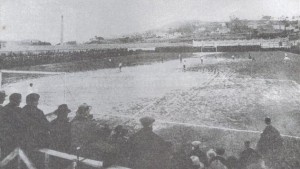
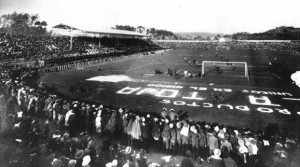
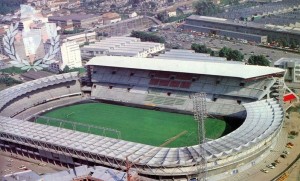
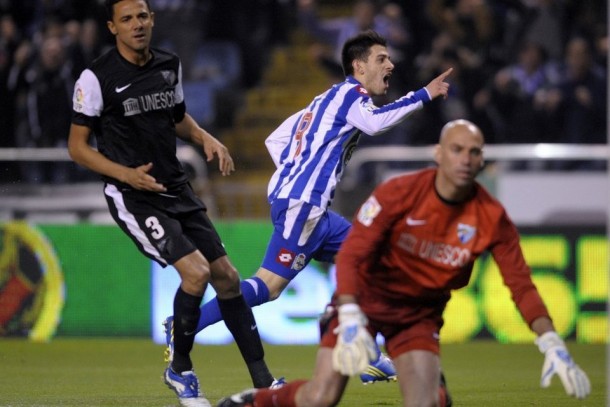




One Comment
You must be logged in to post a comment Login